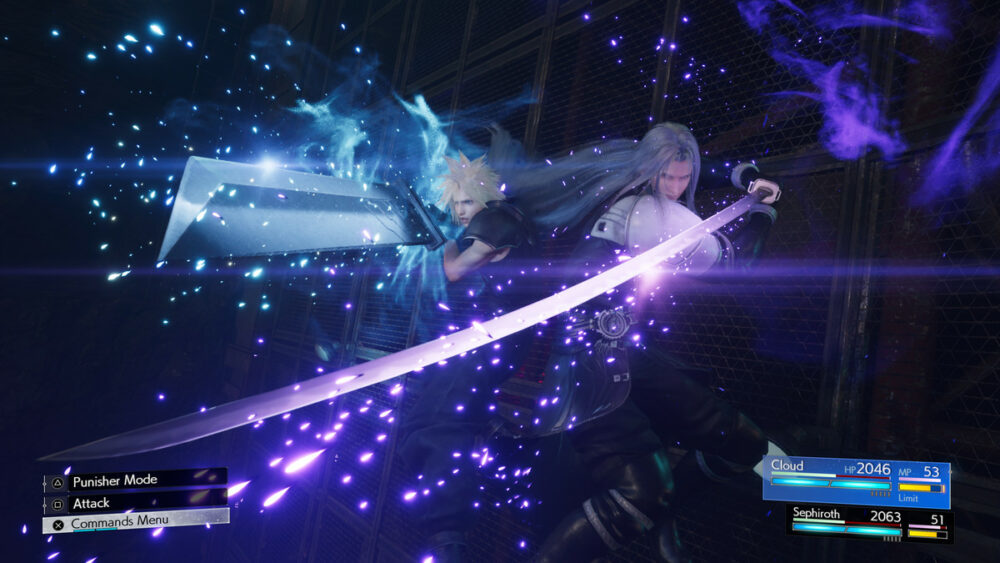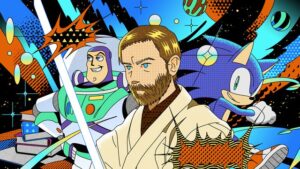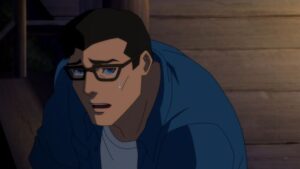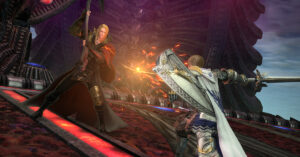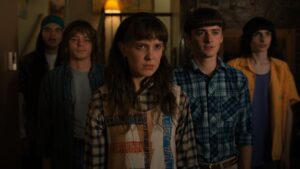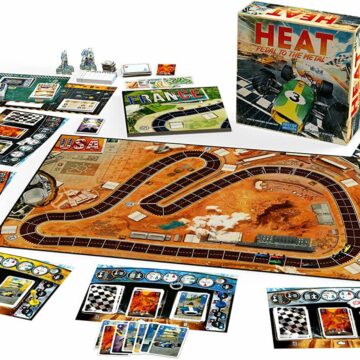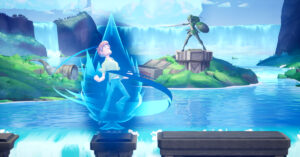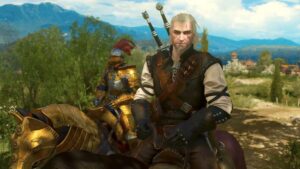A recent report by Bloomberg detailed some soul-searching and scapegoating at Square Enix after a drop in its share price and the perceived underperformance of Final Fantasy 16. Sources criticized disorganized management in a landscape of unruly “fiefdoms” led by single, powerful producers. That may be true, and I wouldn’t want to underplay the frustrations of developers working under those conditions. But there’s also something to be said for letting enormously experienced, creative, big personalities run things how they please (within reason). What they make may not hang together perfectly, but it never feels designed by committee. It feels bespoke, obsessive, extravagant, and weird.
That couldn’t be more true of the Final Fantasy 7 remake project, a sprawling, three-game reinterpretation and expansion of the 1997 classic, masterminded by producer (and director of the original) Yoshinori Kitase with an assist from creative director and Kingdom Hearts overlord Tetsuya Nomura. It’s indulgent fan service that’s somehow also willing to change the script; fans were shocked by the slick real-time combat and apparently metafictional twists of the first installment, 2020’s Final Fantasy 7 Remake, but no one could deny that Kitase’s team was really going for it.
Now we have Final Fantasy 7 Rebirth, coming to PlayStation 5 on Feb. 29, 2024: a lavish, blockbuster restaging of the middle bit of an old video game. As suggested by the extremely lively latest trailer, this sequel will cut loose after all the scene-setting and moody iconography of Remake’s re-creation of the choked, dystopian city of Midgar. Rebirth follows Cloud Strife and company as they follow antagonist Sephiroth’s trail across the land, from desert to coast to gaudy pleasure park; confirmed locations include the military fortress city of Junon, the Gold Saucer theme park, and the Forgotten Capital. They explore! They hunt! They ride chocobos! They play minigames! They ride Segways!
[embedded content]
At a recent hands-on session, I got to play two sections of the game: “The Fated Mt. Nibel Mission,” a flashback sequence in which Cloud and Sephiroth are playable together, and “The Open Wilds of Junon,” a taster for the more open exploration and hunting gameplay on offer in Rebirth, before the story took me to Under Junon, a fishing village struggling in the shadow of the oppressive metropolis.
Story-wise, Rebirth is a direct continuation of Remake, but in gameplay terms it’s better to think of it as a traditional video game sequel: expanding the scope, adding features, but cleaving close to what made the first game tick. (Game saves and character builds from Remake don’t carry over — Rebirth is a stand-alone game — but Square Enix promises some bonuses for returning players.) Combat plays out just the same as the first game: a blend of issuing Active Time Battle commands, in an echo of the original game’s turn-based system, and switching between characters to run around, attack, dodge, and block in real-time action combat.
The major addition is Synergy abilities that pair together characters from your party of three for coordinated moves. There are low-key Synergies available at any time when you hold down R1 to block, but the main Synergy abilities are slow-charging showstoppers that gradually build up on their own independent gauge, much like Limit Breaks. They’re flashily animated and satisfying to use, plus there’s a fun wish-fulfillment dimension to watching these beloved characters team up in such a wide range of combinations. (I don’t know if every possible permutation from the game’s playable cast will be featured, but going by the demo, it seems like it.)

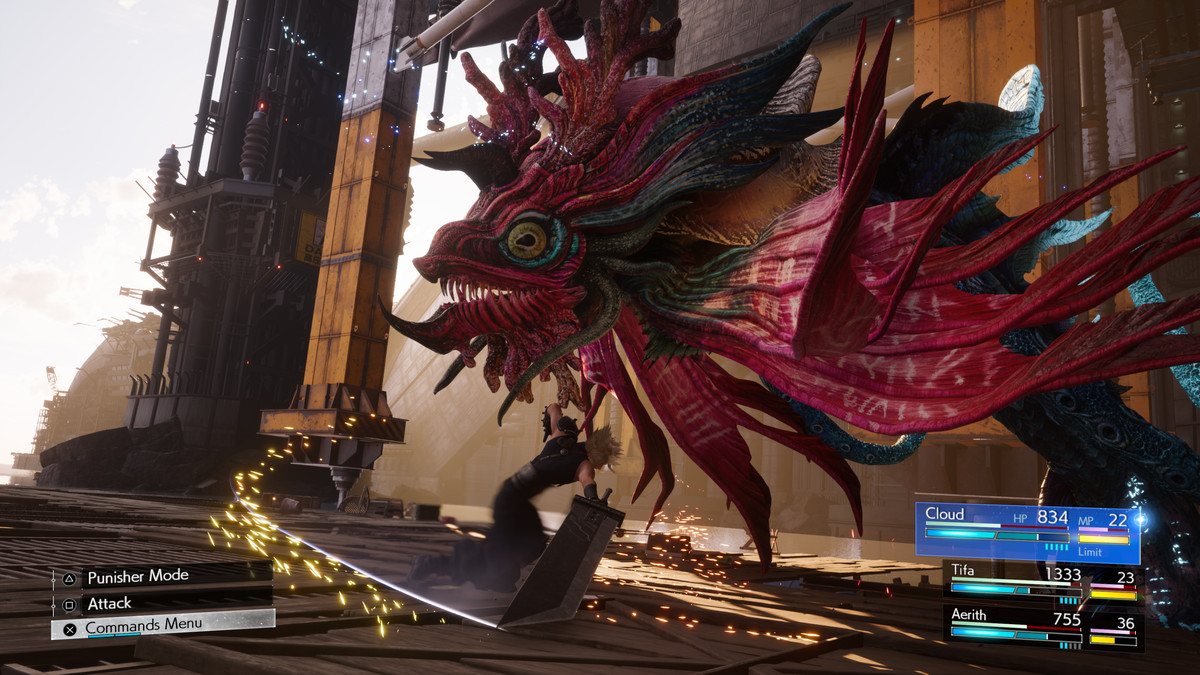
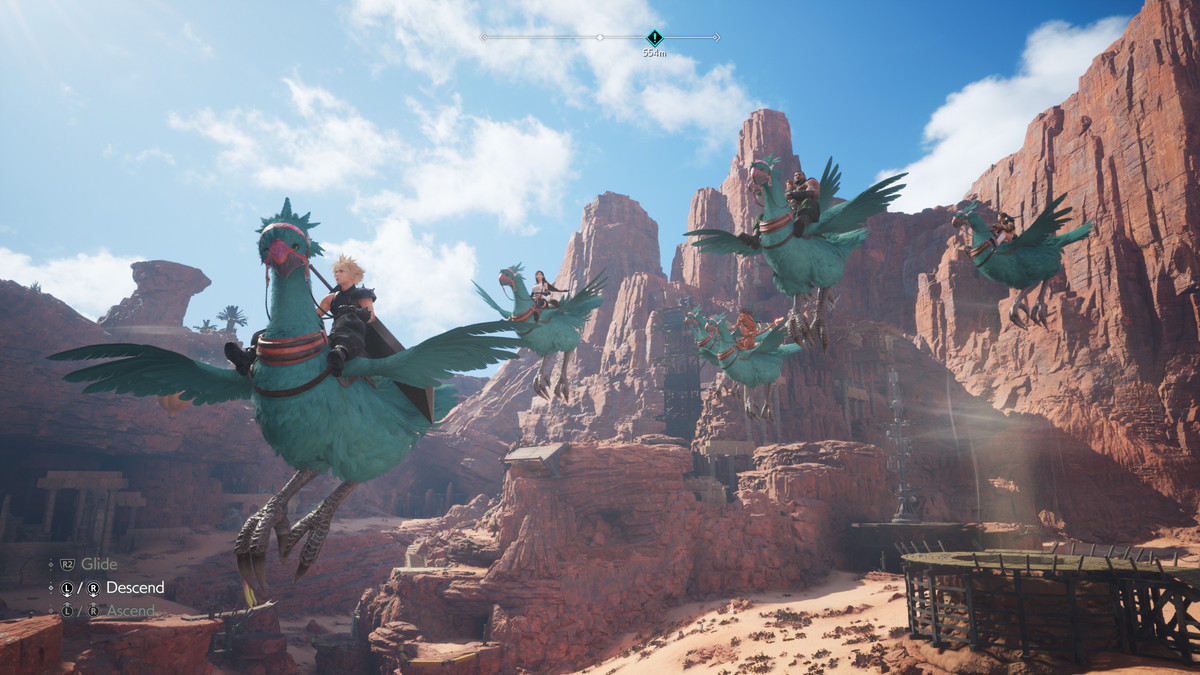

My only hesitation about Synergies is that they may push an already extremely busy, tiered combat system to the point of feeling messy and rushed. A short game demo is never the best environment to explore these things, but more than once I found myself thinking that if Rebirth offers the option to automate the real-time combat and just focus on the more strategic commands, as Remake did, I might take it. Remake and Rebirth’s brawling is fine, but Final Fantasy 16’s crisp, fluid, and refined combat action has rather shown it up, anyway.
Synergies were effectively shown off in the Mt. Nibel mission, which sees Cloud and Sephiroth together in their SOLDIER days, investigating a malfunctioning Mako reactor, accompanied by a young (and not playable) Tifa. Sephiroth is deliberately tuned to feel overpowered in this section, dominating Cloud. It’s an almost uncanny kick to manipulate this iconic character, with his outrageously long locks, coat, and blade, in real time, as the pair faces a boss fight against a scorpion-like Materia Guardian monster.
Square Enix only offered a small section of the wilds outside Junon to explore in the second mission; as is often the case with the company’s games, it felt like a condensed impression of an open world, so much so that it was scarcely worth mounting chocobos to explore and sniff out treasure (although reps say the area in the final game will be much larger). In any case, the real fun here was experimenting with the three available party compositions — permutations of Cloud, Tifa, Aerith, Barret, and the newly playable angry cat guy, Red XIII — in hunts against powerful monsters (referred to as “fiends”) in the field. These confrontations are replayable, and come with optional objectives (pressuring or staggering your opponent, meeting a time limit, and so on) that increase rewards. They seem like a great place to work out the peculiarities of the battle system and perfect your party strategies.
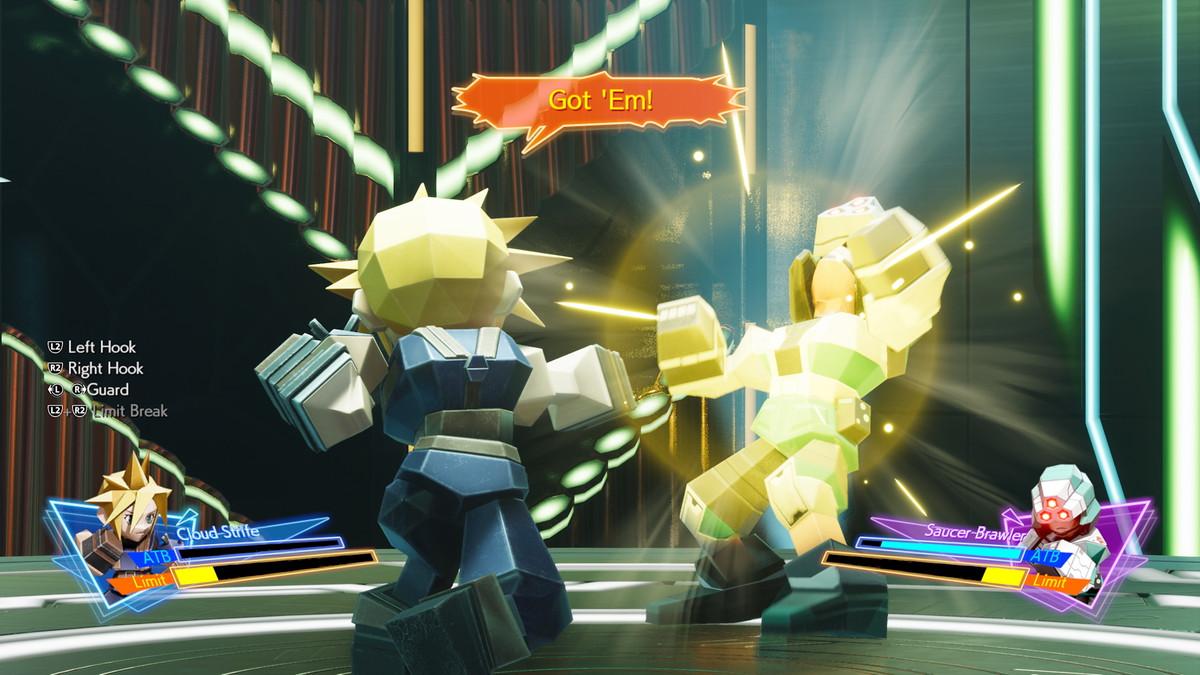
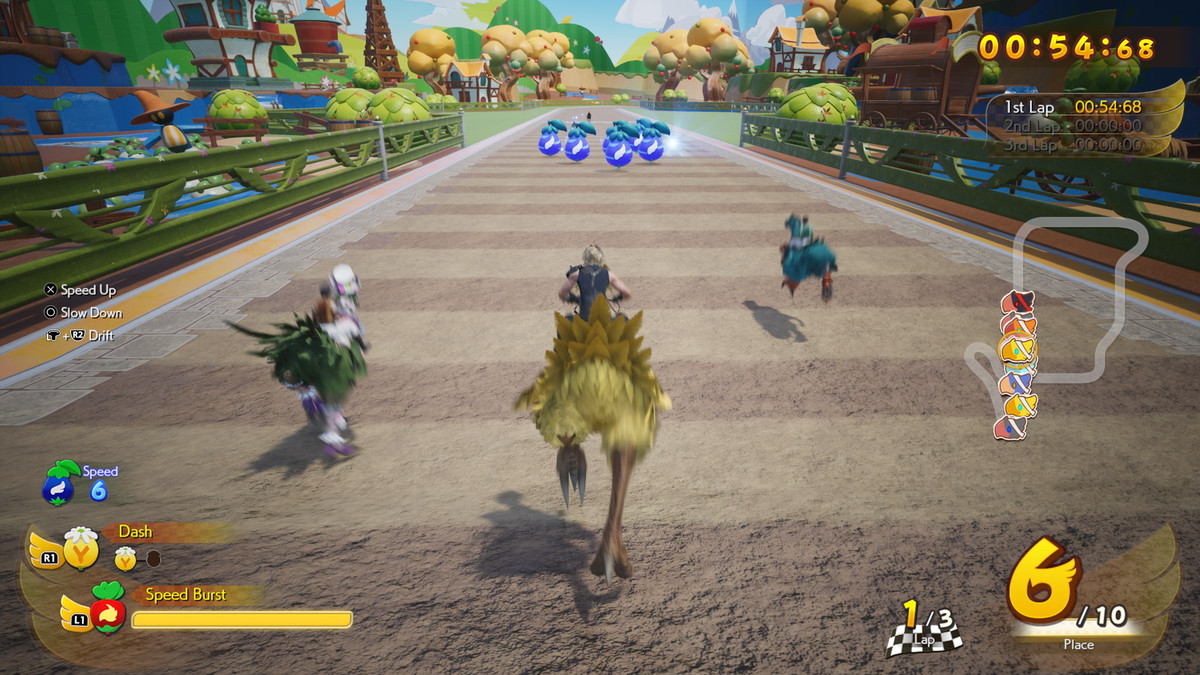
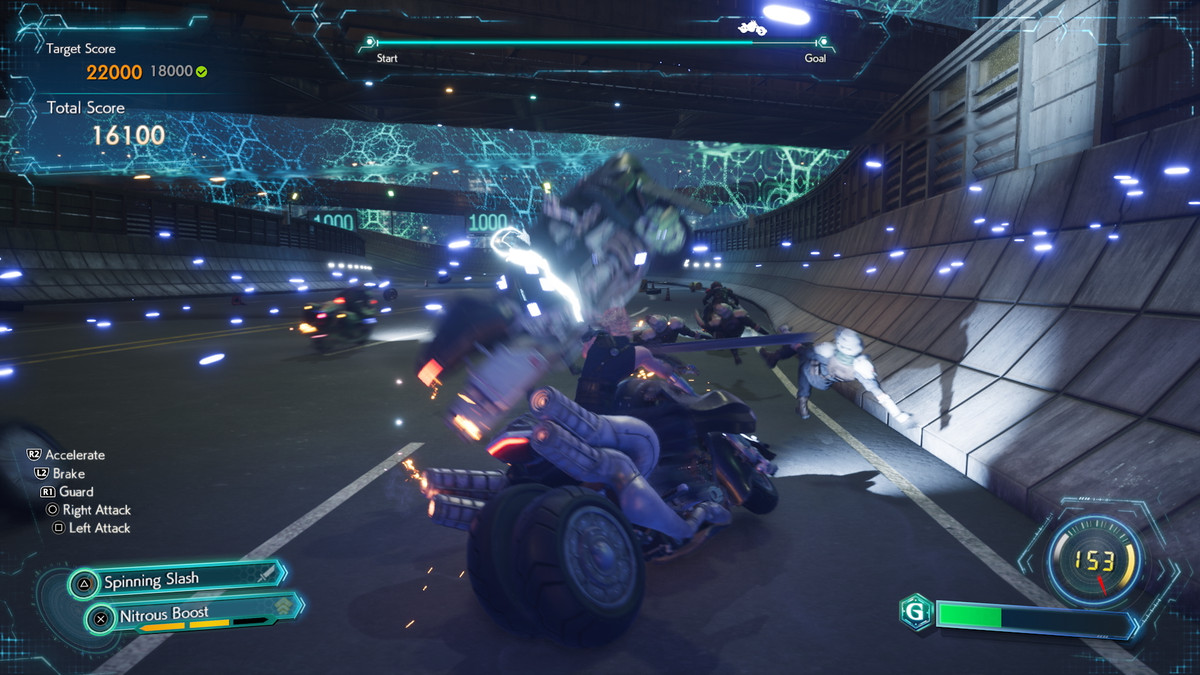
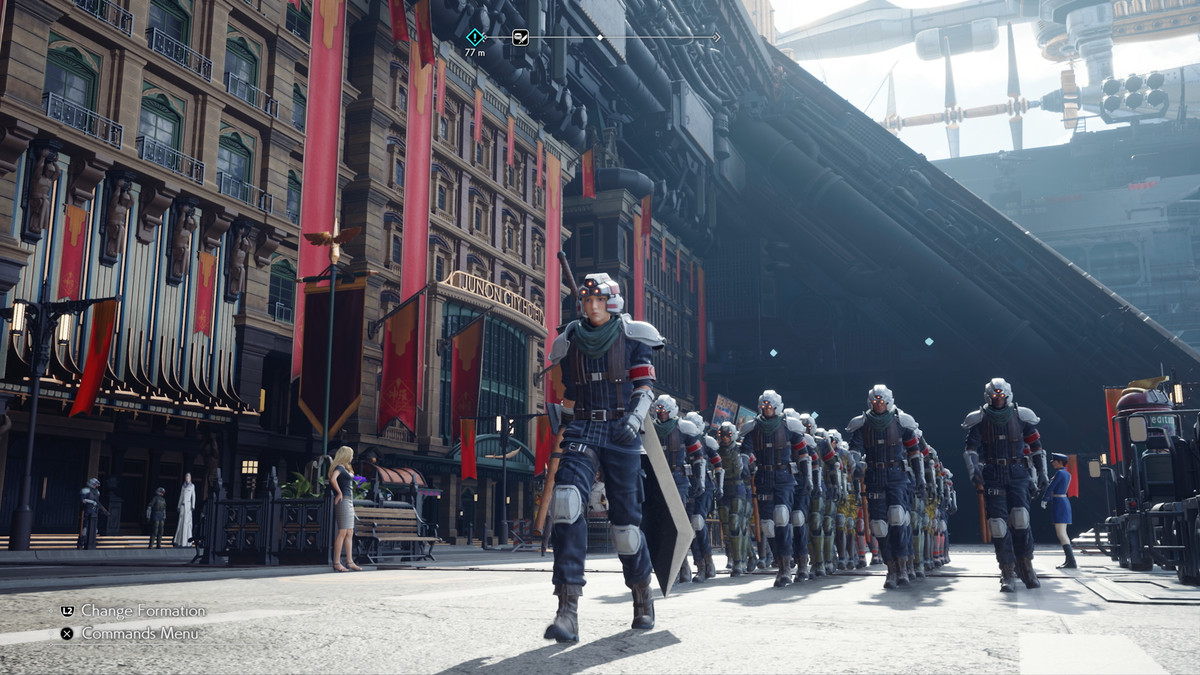
After messing about with these for a while, I followed a marker leading to the shadowy lean-tos of Under Junon — a gorgeously rendered location that, perhaps even more than anything in Remake, feels like wandering into the hazy, low-poly maps of the original, now fully realized. Here, another boss fight with a giant aquatic menace, the Terror of the Deep, heralded the arrival of the ninja Yuffie Kisaragi (introduced in the Intergrade DLC), but the demo sadly ended before I had a chance to add her to my party.
In an interview with the PlayStation Blog, Kitase and his team noted that the order in which locations are visited will vary from the original, and the Gold Saucer can be revisited to play minigames at any time. They promised an expansive world map with many locations that aren’t even included in the main storyline, and Kitase said the team has challenged itself to be more ambitious with new scenes that divert from the original narrative. “I am confident these new scenes will be wildly enjoyable for fans and newcomers alike,” he said.
I’m not as confident as Kitase that everyone in Final Fantasy fandom is going to love Rebirth’s diversions from the original game. But the sense I got was of a game that, even more than Remake, manages to be free to be itself and have some fun — even as it hits the nostalgic notes everyone is waiting for.
- SEO Powered Content & PR Distribution. Get Amplified Today.
- PlatoData.Network Vertical Generative Ai. Empower Yourself. Access Here.
- PlatoAiStream. Web3 Intelligence. Knowledge Amplified. Access Here.
- PlatoESG. Carbon, CleanTech, Energy, Environment, Solar, Waste Management. Access Here.
- PlatoHealth. Biotech and Clinical Trials Intelligence. Access Here.
- Source: https://www.polygon.com/23882020/final-fantasy-7-rebirth-hands-on-preview
- 2024
- 29
- 7
- a
- abilities
- About
- accompanied
- across
- Action
- active
- add
- adding
- ADDITION
- after
- Against
- alike
- All
- almost
- already
- also
- Although
- am
- ambitious
- an
- and
- animated
- Another
- any
- Anything
- ARE
- AREA
- around
- arrival
- as
- At
- automate
- available
- back
- Battle
- battles
- BE
- Beach
- before
- beloved
- bespoke
- BEST
- Better
- between
- BIG
- Bit
- Blade
- blend
- block
- blockbuster
- Bloomberg
- Bonuses
- breaks
- build
- builds
- busy
- but
- by
- CAN
- capital
- carry
- case
- Cat
- challenged
- chance
- change
- character
- characters
- chunky
- City
- Classic
- close
- Cloud
- combat
- come
- coming
- committee
- company
- company's
- conditions
- confident
- confirmed
- content
- coordinated
- could
- Creative
- CRISP
- Cut
- days
- deep
- Demo
- designed
- detailed
- developers
- DID
- Dimension
- direct
- Director
- Dodge
- down
- Drop
- dystopian
- echo
- effectively
- embedded
- ended
- enjoyable
- Environment
- even
- Every
- everyone
- expanding
- expansion
- expansive
- experienced
- exploration
- explore
- extremely
- faces
- fan
- fans
- FANTASY
- featured
- Features
- Feb
- feel
- felt
- field
- fight
- Fighting
- Final
- Final Fantasy
- Final Fantasy 7 Rebirth
- fine
- First
- fluid
- Fly
- Focus
- follow
- followed
- follows
- For
- forgotten
- formation
- Fortress
- Free
- Friends
- from
- Frustrations
- fully
- fun
- game
- gameplay
- Games
- Gaming
- gauge
- giant
- going
- Gold
- got
- great
- guardian
- had
- hands-on
- has
- Have
- he
- Hearts
- her
- here
- his
- hits
- hold
- How
- HTTPS
- huge
- i
- iconic
- if
- in
- include
- Included
- Increase
- Independent
- indulgent
- Interview
- into
- introduced
- investigating
- Is
- issuing
- IT
- ITS
- itself
- just
- kick
- Kingdom
- Kingdom Hearts
- know
- Land
- landscape
- larger
- latest
- Lavish
- leading
- Led
- like
- LIMIT
- location
- locations
- Locks
- Long
- love
- made
- main
- major
- make
- management
- many
- map
- Maps
- Mario
- Mario Kart
- May
- me
- Meeting
- menace
- Middle
- might
- Military
- Mission
- monsters
- more
- MT
- much
- my
- myself
- narrative
- never
- New
- newcomers
- newly
- Ninja
- no
- Nomura
- not
- noted
- notes
- now
- objectives
- obsessive
- of
- off
- offer
- offered
- Offers
- often
- Old
- on
- once
- One
- only
- open
- Open World
- Option
- or
- order
- original
- out
- outside
- over
- Overlord
- own
- pair
- Party
- perceived
- perfect
- perfectly
- perhaps
- Personalities
- place
- plato
- plato data intelligence
- platodata
- platogaming
- play
- players
- plays
- playstation
- playstation 5
- please
- Plus
- Point
- Polygon
- possible
- powerful
- price
- producer
- Producers
- project
- promised
- promises
- push
- racing
- range
- rather
- reactor
- Real
- real-time
- realized
- really
- recent
- red
- refined
- report
- Rewards
- Ride
- Run
- Said
- same
- satisfying
- saves
- say
- scenes
- scope
- Screen
- script
- second
- section
- seem
- seems
- sees
- sense
- sequel
- Service
- session
- Shadow
- Share
- share price
- shocked
- Short
- shown
- single
- small
- Sniff
- So
- some
- somehow
- something
- sources
- square
- Square Enix
- stand
- Story
- storyline
- Strategic
- Strategies
- struggling
- style
- such
- synergy
- system
- Take
- takes
- Team
- terms
- Tetsuya nomura
- than
- that
- The
- The Game
- their
- theme
- there
- These
- they
- things
- think
- Thinking
- this
- those
- three
- Through
- tick
- time
- to
- together
- took
- traditional
- trail
- trailer
- true
- Turquoise
- twists
- two
- under
- unleash
- up
- use
- Video
- Village
- visited
- waiting
- want
- was
- watching
- we
- were
- What
- when
- while
- wide
- wide range
- Wikipedia
- will
- willing
- with
- Work
- work out
- working
- world
- worth
- XIII
- Yoshinori Kitase
- you
- young
- your
- youtube
- zephyrnet
